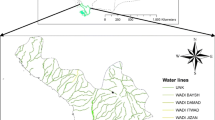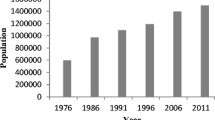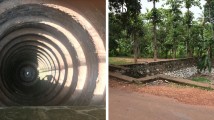Abstract
Artificial recharge is used to increase the availability of groundwater storage and reduce saltwater intrusion in coastal aquifers, where pumping and droughts have severely impaired groundwater quality. The implementation of optimal recharge methods requires knowledge of physical, chemical, and biological phenomena involving water and wastewater filtration in the subsoil, together with engineering aspects related to plant design and maintenance operations. This study uses a novel Decision Support System (DSS), which includes soil aquifer treatment (SAT) evaluation, to design an artificial recharge plant. The DSS helps users make strategic decisions on selecting the most appropriate recharge methods and water treatment technologies at specific sites. This will enable the recovery of safe water using managed aquifer recharge (MAR) practices, and result in reduced recharge costs. The DSS was built using an artificial intelligence technique and knowledge-based technology, related to both quantitative and qualitative aspects of water supply for artificial recharge. The DSS software was implemented using rules based on the cumulative experience of wastewater treatment plant engineers and groundwater modeling. Appropriate model flow simulations were performed in porous and fractured coastal aquifers to evaluate the suitability of this technique for enhancing the integrated water resources management approach. Results obtained from the AQUASTRESS integrated project and DRINKADRIA IPA CBC suggest the most effective strategies for wastewater treatments prior to recharge at specific sites.





Similar content being viewed by others
References
AquaStress (2009) Mitigation of Water Stress through new Approaches to Integrating Management, Technical, Economic and Institutional Instruments (Contract no. 511231–2). The AquaStress Case Studies. A publication of the Aquastress IP consortium, D. Assimacoloupos Eds., Chios, Greece, 2009, pp 139.
Argo DG, Cline NM (1985) Groundwater recharge operation at water factory 21, Orange County, California. In: Asano T (ed) Artificial recharge of groundwater. Butterworth Publishers, Boston, pp 359–396
Asano T (1985) Artificial recharge of groundwater. Butterworth Publishers, Boston
Barcelona M., Kim M., Masciopinto C. and La Mantia R. (2006) A Gypsum-Barrier Design to Stop Seawater Intrusion in a Fractured Aquifer at Salento (Southern Italy), Proceedings 1st SWIM-SWICA Joint Saltwater Intrusion Conference, Cagliari-Chia Laguna, Italy - September 24–29, pp 263–272, http://www.swim-site.nl/pdf/swim19/pages_263_272.pdf.
Barry KE, Vanderzalm JL, Miotlinski K, Dillon PJ (2017) Assessing the impact of recycled water quality and clogging on infiltration rates at a pioneering soil aquifer treatment (SAT) site in Alice Springs, northern territory (NT), Australia. Water 9:179. doi:10.3390/w9030179
Besancon A., De Wilde W., Ernst M., Hein A., Joss A., Kazner C., Masciopinto C., Pollice A., Sharma S., Wintgens T., Yong H., Zhao X. (2007) RECLAIM WATER EU project: characterization of unit operations for wastewater reclamation in terms of upgrading capability, reliability and flexibility, Deliverable D 1.1, Eawag Ueberlandstr. 133, 8600 Duebendorf, pp 25.
Chidley TRE, Elgy J, Marinari S, Pooly M (1987) An expert system for irrigation engineers. In: Sriram D, Adey RA (eds) Knowledge based expert systems for engineering: classification, education and control. CMP, Boston, pp 247–253
Chrysikopoulos CV, Masciopinto C, La Mantia R, Manariotis ID (2010) Removal of biocolloids suspended in reclaimed wastewater. Environ Sci Technol 44:971–977. doi:10.1021/es902754
Constantinou C. (1970) Hydrogeology of the Akrotiri peninsula, Cyprus Geological Survey Department, Nicosia.
Cousin F., Jestin J.M., Lannuzel P. and Meymy H. (1987) Biosurveyor, a knowledge based system for operators conducting wastewater treatment plants, Proc. XXII IAHR, Seminar System Expert, Lausanne.
Detay M. and Poyet P. (1989) Development and evaluation of a field prototype expert system for village water supply programs. Proc. Inter. Symposium on Groundwater Management Quantity and Quality, Benidorm, pp 80–100.
DrinkAdria (2016). IPA CBC, Networking for Drinking Water Supply in Adriatic Region, Altran et al., 2016. Layman’s report. Edit by Corbatto, Silvoni, Lisjak. DrinkAdria Publisher, Trieste, 1–55. Available at: http://www.drinkadria.eu/fileadmin/user_upload/Layman_-_final_version/Drinkadria_Laymans_Report_WEB.pdf.
European Union (2000) Directive 2000/60/EC of the European Parliament and of the Council of 23 October 2000 establishing a framework for Community action in the field of water policy (OJ L 327, 22.12.2000). Available at: http://eur-lex.europa.eu/resource.html?uri=cellar:5c835afb-2ec6-4577-bdf8-756d3d694eeb.0004.02/DOC_1&format=pdf.
Italian D.Lgs n.152 (2006) “Effluent Quality for surface spreading", Tab. 4, All. 5, III Part
Jackovides J. (1982) Southern conveyor project, feasibility study, groundwater resources, Vol. 3, Cyprus Water Development Department, Nicosia.
Kahan G, McDermott J (1986) The mud system, IEEE Expert, Spring, pp 23–32.
Le Corre K., Aharoni A., Cauwenberghs J., Chavez A., Cikurel H., Ayuso-Gabella N., Genthe B., Gibson R., Jeffersom B., Jeffrey P., Jimenez B., Kazner C., Masciopinto C., Page D., Regel R., Rinck-Pfeiffer S., Salgot M., Steyn M., van Houtte E., Tredoux G., Wintgens, XC., Yu L. and X. Zhao (2012) Water reclamation for aquifer recharge at height case study sites: a cross case analysis. Chapter 2 in Water reclamation technologies for safe managed aquifer recharge. Edit by Kazner, C., Wintgens, T., and P. Dillon, IWA Publishing, London SW1H 0QS, UK, pp 11-31.
Macgilchrist R.S. (1987) Apogee: a sewage rehabilitation planning expert system, Proc. XXII IAHR, Seminr System Expert, Lausanne.
Masciopinto C (2013) Management of aquifer recharge in Lebanon by removing seawater intrusion from coastal aquifers. J Environ Manag 130. doi:10.1016/j.jenvman.2013.08.021
Masciopinto C, Palmisano N, Tangorra F, Vurro M (1991) A decision support system for artificial recharge plant. Water Sci Technol 24(9):331–342
Masciopinto C, La Mantia T, Tandoi V, Levantesi C, Divizia M, Donia D, Gabrieli R, Petrinca A (2011) Analytical solution for the modeling of the natural time-dependent reduction of waterborne viruses injected into fractured aquifers. Environ Sci Technol 45:636–642. doi:10.1021/es102412z
Milnes E. (2000) Hydrogeological investigation of the Akrotiri porous aquifer, Southern Cyprus: seawater intrusion modelling. Diploma thesis, Cycle postgrade Interuniversitaire, EPFL, UNI-Neuchatel, Spécialisation en hydrogéologie, Neuchâtel, November.
Milnes E, Renard P (2004) The problem of salt recycling and seawater intrusion in coastal irrigated plains: an example from the Kiti aquifer (southern Cyprus). J Hydrol 288:327–343
Pavelic P, Nicholson BC, Dillon PJ, Barry KL (2005) Fate of disinfection by-products in groundwater during aquifer storage and recovery with reclaimed water. J Contam Hydrol 77:351–373
Ringleb J, Sallwey J, Stefan C (2016) Assessment of managed aquifer recharge through modeling – a review. Water 8:579. doi:10.3390/w8120579
Rossetto R., Borsi I. and Foglia L. (2015) FREEWAT: FREE and open source software tools for Water resource management, Rendiconti Online Società Geologica Italiana, Volume 35, 1 April 2015, pp 252–255.
Scanlon BR, Reedy RC, Faunt CC, Pool D, Uhlman K (2016) Enhancing drought resilience with conjunctive use and managed aquifer recharge in California and Arizona. Environ res Lett 11(2016):035013. doi:10.1088/1748-9326/11/3/035013
Schüth C (2014) MARSOL - demonstrating managed aquifer recharge as a solution to water scarcity and drought. - EGU general assembly 2014. Geophys res Abstr 16:EGU2014–EGU9073
Sheng Z (2005) An aquifer storage and recovery system with reclaimed wastewater to preserve native groundwater resources in El Paso, Texas. J Environ Manage 75:367–377 Netherlands
Sidhu JPS, Toze S, Hodgers L, Barry K, Page D, Li Y, Dillon P (2015) Pathogen decay during managed aquifer recharge at four sites with different geochemical characteristics and recharge water sources. J Environ Qual 44:1402–1412. doi:10.2134/jeq2015.03.0118
Trüeb E. (1979) Survey of the present state of artificial ground-water recharge in Switzerland, international symposium artificial groundwater recharge, research result and practical application, Dortmund, 14-18 May
United Nation Publication (1975) Groundwater storage and artificial recharge, natural resources/water series, 3, New York.
Xanke J, Goeppert N, Sawariech A, Liesch T, Kinger J, Ali W, Hötzl H, Hadidi GN (2014) Impact of managed aquifer recharge on the chemical and isotopic composition of a karst aquifer: Wala reservoir, Jordan. Hydrogeology Journal. doi:10.1007/s10040-015-1233-6
Acknowledgments
This study was supported by an EU grant from the Drink Adria IPA ADRIATIC CBC project (1°str/0004) 2013/2016.
Author information
Authors and Affiliations
Corresponding author
Additional information
Key Points
• A new decision support system (DSS) tool was implemented using background data from artificial recharge plants around the world;
• Experiments and results on soil aquifer treatment efficacy are presented;
• Flow and transport in coastal aquifers was modeled to support decisions for sustainable resource management.
Electronic Supplementary Material
Supplementary Material A reports the flow and transport model equations for porous and fractured aquifers. (PDF 961 kb)
Supplementary Material B contains water quality threshold values implemented into the DSS (Table B1) and the estimation of sustainable annual withdrawal from the Akrotiri (Limassol) aquifer for domestic and irrigation use, under different scenarios (Table B2).
The DSS software Recharge.exe together with expert rules implemented into DSS are in the file Recharge.zip. This file is freely available at: costantino.masciopinto@ba.irsa.cnr.it. The software is free and ready for use, provided the article is fully cited.
ESM 1
(PDF 961 kb)
Rights and permissions
About this article
Cite this article
Masciopinto, C., Vurro, M., Palmisano, V.N. et al. A Suitable Tool for Sustainable Groundwater Management. Water Resour Manage 31, 4133–4147 (2017). https://doi.org/10.1007/s11269-017-1736-0
Received:
Accepted:
Published:
Issue Date:
DOI: https://doi.org/10.1007/s11269-017-1736-0




